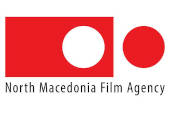After a period of more than a year beginning in 2010, when film production and distribution funds were blocked, the Hungarian film industry saw an improvement at the end of April 2012 as the new Hungarian Film Fund (www.filmalap.hu) headed by Agnes Havas, announced production grants for four feature films and 40 pre-production/development grants for projects including nine debut features, two documentaries and one animated film.
FUNDING
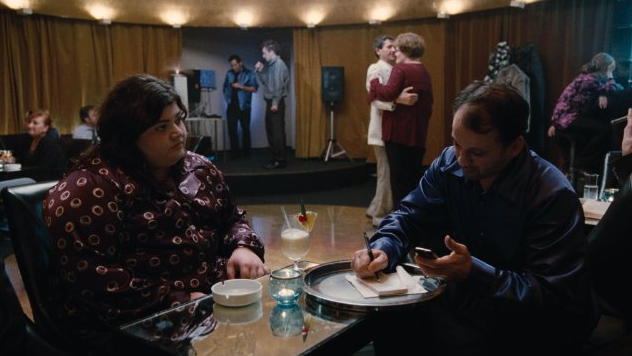 The 2012 budget for film funding is 20m EUR (5.5. billion HUF), financed under a new law stating earmarks 80% of the state-run 6/45 Lotto to the support of the Hungarian film industry.
The 2012 budget for film funding is 20m EUR (5.5. billion HUF), financed under a new law stating earmarks 80% of the state-run 6/45 Lotto to the support of the Hungarian film industry.
The Hungarian Motion Picture Foundation (MMK,www.mmka.hu), the institution handling the funding, became insolvent in mid-2010, when the government decided not to honor its contract with MMK. In January 2011 Andrew G. Vajna, the Hungarian-born American producer, was appointed as government commissioner for film and asked to develop a new system to support film production. The government's decision to close the MMK was announced in June 2011, and the Hungarian National Film Fund with Agnes Havas as chief executive was set up.
Vajna got an additional 6 billion HUF (about 20m EUR) from the government on 11 July 2011 in order to pay off the majority of MMK's debts, and reached an agreement to purchase the claims of three banks - ERSTE, MKB and FHB – which had made loans to Hungarian film producers.
Magyar Filmunio (www.magyarfilmunio.hu), the Hungarian film promotion organisation came under the auspicies of the Hungarian Film Fund and in August, Katalin Vajda was named its new director. Filmunio operates under the international division of the Hungarian Film Fund, which is headed by Csaba Bereczki as of October 2011.
In August 2011 the Hungarian National Film Fund announced the names of the five film professionals who will make the decisions on grants for the Hungarian film industry: Andrew G. Vajna, Agnes Havas, Reka Divinyi, Peter Miskolczi, and Andras Balint Kovacs. In September 2011 the Hungarian National Film Fund (MNF,www.filmalap.hu) published its first call for grants, allotting the maximum amount of support, 7.5 million HUF (26,000 EUR), for script-development and pre-production, and 150 million HUF (535,000 EUR) for production. The support budget for 2011 was 1.6 billion HUF (5.7m EUR).
A major change came in November when a draft amendment requiring that 80% of a state-run lottery (6/45 Lotto) go to support the Hungarian Film Fund was approved in the Parliament (www.mkogy.hu). This law will pump 4 billion HUF (cca. 13 million EUR) into the national film industry in 2012. The lottery began financing the film industry as of 1 January 2012.
 In January the Hungarian National Film Fund published the first grants for 2012. Károly Ujj Mészáros's first feature,Liza, the Fox-Fairy, János Szász'sThe Notebookand Gyula Nemes'sZeroreceived a total amount of 1,283,470 EUR (400 M HUF) as production grants. All three are international co-productions. Together with Balint Kenyeres'sHier, four features received production grants at the beginning of 2012.
In January the Hungarian National Film Fund published the first grants for 2012. Károly Ujj Mészáros's first feature,Liza, the Fox-Fairy, János Szász'sThe Notebookand Gyula Nemes'sZeroreceived a total amount of 1,283,470 EUR (400 M HUF) as production grants. All three are international co-productions. Together with Balint Kenyeres'sHier, four features received production grants at the beginning of 2012.
Recently the Fund allotted production grants for the featuresHeavenly Shiftby Márk Bodzsár andMirageby Szablocs Hajdu, and also for the documentaryStream of Loveby Ágnes Sós. It also gave a pre-production support to Péter Gárdos'sFever at Dawn.
In 12 July the Fund granted 208,000 EUR/60 M HUF production grant for Ádám Császi’s debut featureLand of Storms (Viharsarok), a Hungarian-German coproduction between Proton Cinema (www.protoncinema.hu) and Unafilm (www.unafilm.de).
Since its first decision (October 2011), the Hungarian National Film Fund had granted development/pre-production support to more than 40 projects.
In May, Andrew G. Vajna said in an interview with FNE during the Cannes Film Festival 2012 (www.festival-cannes.com),
"The most important thing that we have done is clean up the debts left behind by MMK, the old debts, the bad debts, and the misunderstandings with everyone has been cleared up (...)
We have about 35 films in development, we have green-lighted four of them, one is in principal photography and we are looking to do at least two more films this year so I think the first year out we will do six films. Hopefully we will go to ten next year and our goal is to continue doing that on a year by year basis."
FILM PRODUCTION
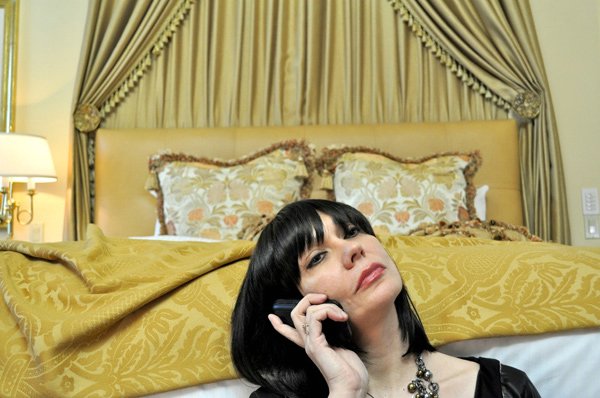 In 2011 a number of Hungarian productions were completed and released in cinemas, but only a few started shooting. A total of 15 Hungarian feature films were released in cinemas in 2011.
In 2011 a number of Hungarian productions were completed and released in cinemas, but only a few started shooting. A total of 15 Hungarian feature films were released in cinemas in 2011.
By 2012 the long delayed government funding pumped new life into Hungarian film production in 2012 with four new feature films starting to shoot this year after winning funding from the new Hungarian Film Fund.
The lack of money inspired György Pálfi to makeFinal cut - Ladies and Gentlemen, a collage made of 500 films which closed the Cannes Classics sections this year.
In 2011- 2012 director/writer Szabolcs Hajdu shot The Gambler,in Las Vegas.The film adapts the story from a novel by Fyodor Dostoevsky and is produced by Andrea Taschler of Mirage Film Studio and Zoltan Miklos Hajdu, in coproduction with the American based Got Films.
Bence Gyöngyössy'sLast Rhapsodystarted shooting on 27 September 2011, with Europa 2000 producing and the Hungarian Culture Ministry backing the project recounting the last days of Franz Liszt who died in Bayreuth in 1886.
Kenyeres Balint moved into preproduction withHier (Tegnap), after receiving 515,000 EUR (150 m HUF) from the Hungarian National Film Fund (www.filmalap.hu) in February.
Robert Pejo plans to shoot his new film,Paw, a tender little fable about a dog and his owner, at the end of 2012. László Kántor is producing through his company, Új Budapest Filmstúdió Kft (www.ujbudapestfilmstudio.hu). The project is still in development.
Agnes Kocsis plansEden, a story mirroring the world through its main character, a woman allergic to almost everything.
Liza, the Fox Fairyis produced by Tamás Major and Filmteam (www.filmteam.hu). Starring Mónika Balsai, the film started shooting on 2 July 2012.
 The Notebookis produced by Pál Sándor and Hunnia Filmstudio (www.hunniafilm.hu) together with Germany's Intuit Pictures (www.intuitpictures.com). The coproducers are Austria's Amour Fou (www.amourfou.at) and France's Dolce Vita Films. The adaptation of the cult novelLe Grand Cahierby the Hungarian-born Swiss author Agota Kristóf wrapped shooting at the end of April with the premiere expected in early 2013.
The Notebookis produced by Pál Sándor and Hunnia Filmstudio (www.hunniafilm.hu) together with Germany's Intuit Pictures (www.intuitpictures.com). The coproducers are Austria's Amour Fou (www.amourfou.at) and France's Dolce Vita Films. The adaptation of the cult novelLe Grand Cahierby the Hungarian-born Swiss author Agota Kristóf wrapped shooting at the end of April with the premiere expected in early 2013.
Zerois produced by Gábor Dettre and the Hungarian company Playtime together with the Czech company Endorfilm (www.endorfilm.cz) and Germany's 42film (www.42film.de). Shooting is planned to start in December 2012 in Germany, Hungary and Mali.
Hieris a co-production between Attila Csáky of Hungary's Cameo Film (www.cameofilm.hu), François d'Artemare of France's Les Films de L'Après-midi, and Anna Croneman of Bob Film Sweden (www.bobfilmsweden.com). The international cast includes Maurice Benichou, Jesper Christensen, Vlad Ivanov, Nastassja Kinski and Stellan Skarsgård. The shooting will take place in autumn 2012 in Morocco.
Márk Bodzsár's debut featureHeavenly Shift is produced by Hungary's Unio Film (www.uniofilm.hu) in co-production with Hungary's Sparks, and it will be shot from the end of August through October. It is set to be finished in spring 2013.
Szablocs Hajdu'sMirage is produced by Hungary's Mirage Film Studio and Filmpartners (www.filmpartners.hu), the British company Fourth Culture Films (www.fourthculturefilms.com) and Slovakia's MPhfilms (www.mphilms.sk). The dates of shooting are not yet confirmed.
BOX OFFICE
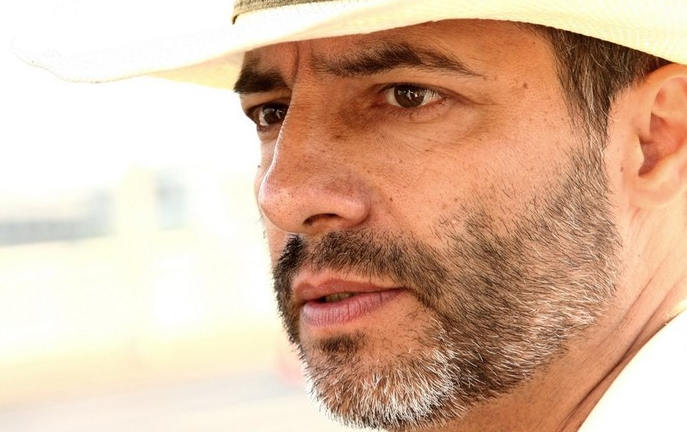 Released in Hungarian cinemas on 16 December 2010 the comedyGlass Tiger 3 (Üvegtigris 3)distributed by Szuez had 295,366 admissions and gathered approximately 1.1m Euro (329,024,028 HUF) in 2011. The film directed by Péter Rudolf and produced by Film Partners (www.filmpartners.hu) climbed in the charts to fifth place, as the only European production in an American Top 10.
Released in Hungarian cinemas on 16 December 2010 the comedyGlass Tiger 3 (Üvegtigris 3)distributed by Szuez had 295,366 admissions and gathered approximately 1.1m Euro (329,024,028 HUF) in 2011. The film directed by Péter Rudolf and produced by Film Partners (www.filmpartners.hu) climbed in the charts to fifth place, as the only European production in an American Top 10.
The Hungarian film with best results among domestic premieres in 2011 was Tamás Sas's romantic comedyS.O.S Love! - The Million Dollar Contract. Released on 15 December, the film stars Darryl Hannah and Billy Zane with Hungarian and Russian actors. It made $179,154 according towww.boxofficemojo.com, and was at number 75 in the charts. In 2011 domestic films took only 3 - 4% during the first 11 months.SOS Love! - The Million Dollar Contractopened at number five at the box office in Budapest and was riding at number eight by its second week in the cinemas with 20, 805,095 HUF and 15,514 admissions in Budapest. Produced by Budapest based SOS Love Merchandizing (www.soslove.hu) the Hungarian, Russian, US, UK coproduction is a sequel to the 2007 Hungarian blockbuster SOS Szerelem! and the first Hungarian feature film shot in 3D.
The small market share was driven by a dearth of domestically produced commercial films in 2011. The two most successful Hungarian releases so far have been a 50 minute nature film Wild Hungary(Vad Magyarország) directed by Zoltan Torok and produced by Budapest based Wild Tales Productions (www.wildtales.net), which scored 20,000 admissions mainly due to the schools, which took their pupils to the screenings.
 Another top Hungarian feature film wasAdrienn Pal, directed by Agnes Kocsis and produced by KHM Film (www.kmhfilm.com) which had almost 11,000 admissions after a release date of 16 March 2011, a very good result for an arthouse film.Adrienn Palwon the FNE Visegrad Prix among many other awards. Another title distributed by Mozinet (www.mozinet.hu) is Marcel Jankovics'sThe Tragedy of Man, a long animated film released on 18 December with almost 20,000 admissions to date.
Another top Hungarian feature film wasAdrienn Pal, directed by Agnes Kocsis and produced by KHM Film (www.kmhfilm.com) which had almost 11,000 admissions after a release date of 16 March 2011, a very good result for an arthouse film.Adrienn Palwon the FNE Visegrad Prix among many other awards. Another title distributed by Mozinet (www.mozinet.hu) is Marcel Jankovics'sThe Tragedy of Man, a long animated film released on 18 December with almost 20,000 admissions to date.
The Hungarian film with the best position in charts by mid-2012 is Istvan Szabo'sThe Door, released on 8 March. The film made $124,088 to and is in 29th place.
There were 9.5 million admissions in the Hungarian cinemas in 2011.
INTERNATIONAL PRODUCTIONS
In recent years Hungary has surpassed Czech Republic in terms of attracting international productions, due to the highly successful 2004 tax incentives law (20 percent tax rebate). In 2011 six projects includingWorld Without EndandThe Borgiasmade commitments to spend a total of HUF 21billion (EUR 67.7 million) on leasing facilities and other services in Hungary, according to Nepszabadsag daily.
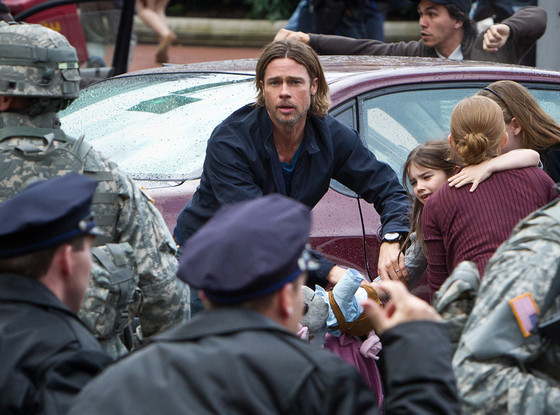 Among them were Brad Pitt and Plan B's big budgetWorld War Z, Tandem and Scott Free'sWorld without Endor47 Ronin. Angelina Jolie's directorial debut,In the Land of Blood and Honey, was also shot in Hungary in 2011.
Among them were Brad Pitt and Plan B's big budgetWorld War Z, Tandem and Scott Free'sWorld without Endor47 Ronin. Angelina Jolie's directorial debut,In the Land of Blood and Honey, was also shot in Hungary in 2011.
There were 28 contracted productions and six films made as coproductions registered at The National Film Office in 2011, with a total amount of 28.3 billion HUF spent (EUR 98.3m). Among them, the Canadian-German TV seriesWorld without End, an adaptation of Ken Follett'sThe Cathedral, totaled 5.4 billion HUF in 2011 alone.
The US samurai movie47 Roninstarring Keanu Reaves spent 4.2 billion HUF in Hungary and Brad Pitt'sWorld War Zspent 3.5 billion HUF.A Good Day to Die Hard, the fifth installment of Die Hard, directed by John Moore and starring Bruce Willis, started shooting in Budapest on 23 April 2012. The big budget production is produced by the US companies Dune Entertainment and Media Magik Entertainment together with the Hungarian Origo Film Group (www.origofilmgroup.com).
EXHIBITION
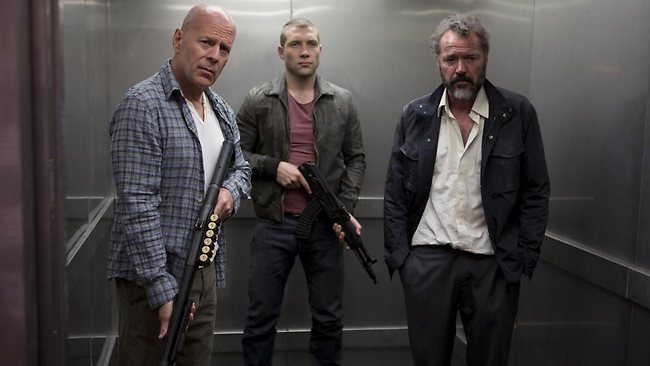 In 2011 the acquisition of Palace Cinemas by Cinema City (www.cinemacity.hu) - IT Cinemas reduced the diversity of ownership in the exhibition sector. Nearly all Hungarian multiplexes are now either owned or controlled by IT Cinemas, with about 90% of the revenue going to the multinational company. IT Cinemas accelerated the installation of DCI projectors in its venues, and 35 mm projectors are expected to be phased out by the end of 2012.
In 2011 the acquisition of Palace Cinemas by Cinema City (www.cinemacity.hu) - IT Cinemas reduced the diversity of ownership in the exhibition sector. Nearly all Hungarian multiplexes are now either owned or controlled by IT Cinemas, with about 90% of the revenue going to the multinational company. IT Cinemas accelerated the installation of DCI projectors in its venues, and 35 mm projectors are expected to be phased out by the end of 2012.
As very few independent cinemas have the money to invest in DCI projectors, this will change the face of Hungarian exhibition. Major distributors are expected to stop releasing the films on 35 mm, leaving smaller cinemas without big films to show. Several major Hungarian cities are left now without an art house cinema (such as Sopron or Győr) as many operators have closed, and serious film magazines and portals are on the verge of bankruptcy as well.
There were 395 screens in 2011, 159 of them digital. The average ticket price was 4.85 EUR in 2011.
TV MARKET
In August 2011 the German television group RTL (www.rtl.de) acquired an addition 31% of the shares of the Hungarian commercial station RTL Klub (www.rtlklub.hu), reaching a 98% stake in the station. RTL Klub is the market leader in Hungary, and 40% of the TV market in Hungary overall.
Digital TV subscriptions rose by over 19,000 in September 2011 and pay TV subscribers reached 3.2 million by the end of November 2011, but some 0.6 million household still had analogue or free satellite and cable TV.
Reporting byCathy Meils.
Report produced by Film New Europe for Step In Locarno 2012















